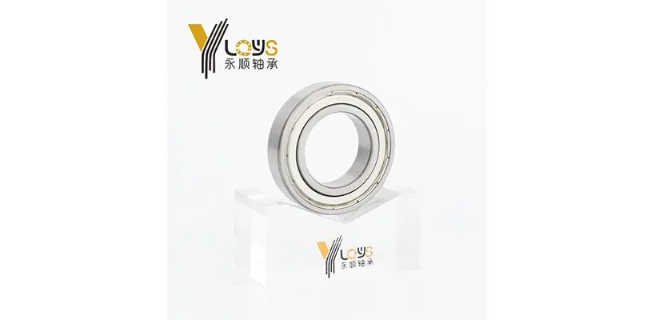5 общих причин отказа подшипников в глубоких шариковых подшипниках (и как их предотвратить)
2025-09-25
Когда вы выбираете подшипник для вашего оборудования, вы ожидаете, что он будет работать плавно в течение тысяч часов без проблем. Однако в реальных магазинах и фабриках подшипники часто разрушаются гораздо раньше, чем ожидалось. Глубокие шариковые подшипники широко используются, потому что они эффективно обрабатывают радиальные и осиевые нагрузки, работают на высоких скоростях и доступны по разумной цене. Тем не менее, даже этот адаптивный дизайн может столкнуться с проблемами.
Почему плохая смазка вызывает отказ подшипника?
Смазание является жизненной линией любого каточного подшипника. Без него трение и тепло быстро растут, а металлические поверхности износятся. Даже с простой частью, как шарикоподшипникотсутствие или неправильная смазка резко сокращает срок службы.
Неадекватные или загрязненные смазочные материалы
Смар, слишком тонкий, слишком толстый или загрязненный пылью, не защищает гоночные полосы и шары. В случае глубокого шаричного подшипника 6203, где шарики катятся на тонко полированных канавках, любое загрязнение царапинает поверхность. Со временем это приводит к шуму и шуму.
Как предотвратить это
Регулярные графики обслуживания и правильный тип жира или масла имеют решающее значение. Для уплотненных конструкций 2RS убедитесь, что уплотнения остаются нетронутыми. Для открытых конструкций планируйте последовательные интервалы смазки на основе рабочих часов.
Может ли несоответствие привести к преждевременной неудаче?
Несмотря на то, что глубокие шариковые подшипники могут переносить небольшую ошибку угла (около 0,25 °), они не предназначены для большого неправильного выравнивания. Когда валы или корпусы устанавливаются немного за центром, возникает неравномерное распределение нагрузки.
Концентрация стресса на мячах и гоночных дорогах
Неправильное выравнивание означает, что одна сторона подшипника несет больше нагрузки. На практике это создает локальный стресс, приводящий к преждевременной усталости. Проблема часто невидима до тех пор, пока вибрация или температура не начнут подниматься.
Как предотвратить это
Проверьте прямоту вала, подъем корпуса и выравнивание во время установки. Использование надлежащих инструментов, а не заставление частей вместе, позволяет избежать раннего повреждения. Некоторые отрасли по-прежнему полагаются на «молоточные подходы», которые почти всегда плохо заканчиваются для подшипника.
Почему перегрузка представляет собой серьезный риск?
Радиальные шарикоподшипники популярны, потому что они могут нести как радиальные, так и осиевые нагрузки. Но когда нагрузки превышают номинальную мощность, даже лучшая сталь не может выдержать.
Примеры реальных приложений
Например, подшипник 6203 предназначен для несения радиальной нагрузки при обращении с умеренной осиовой силой. Если он размещается в конвейере, который регулярно превышает его номинальную нагрузку, каточные элементы слегка деформируются с каждым поворотом. Это вызывает постоянные выщепления, известные как бринеллирование.
Как предотвратить это
Всегда рассчитывайте как радиальные, так и осивые силы при выборе подшипника. Фактор пиковых нагрузок, а не только средних. Если вы сомневаетесь, рассмотрите модель с более высокой емкостью или пару подшипников вместе, чтобы распределить силу.
Как загрязнение повреждает подшипники?
Пыль, грязь и влага являются тихими убийцами подшипников. Как только частицы входят в гоночные полосы, они измельчаются на гладких поверхностях. В руководстве 6203 отмечается, что даже небольшое воздействие влаги может вызвать ржавую, если отсутствует защитное масло или жир.

Типичные источники загрязнения
Мастерии с деревянной пылью, мучными мельницами или наружными установками рядом с дождем и влажностью создают суровые условия. Подшипники открытого типа без щитов или уплотнений особенно уязвимы. Как только начинается коррозия, поверхность обрушивается, увеличивая трение и шум.
Как предотвратить это
Выберите правильный тип уплотнения. Щиты ZZ блокируют большие частицы, в то время как резиновые уплотнения 2RS обеспечивают более жесткий барьер. Также не забывайте о практических шагах: храните подшипники в чистой упаковке и держите запасные части подальше от влажных полов.
Является ли неправильная установка частой причиной отказа?
Да, и это происходит чаще, чем многие признают. Подшипники деликатны в определенных отношениях, сила, применяемая в неправильном месте, разрушает гоночную дорогу или повреждает клетку.
Частые ошибки во время сборки
Нажатие на внешнее кольцо при установке на вал или удар непосредственно молотоком вызывает внутренние повреждения. Перегрев подшипника без надлежащих инструментов может изменить твердость. Даже отпечатки пальцев, оставленные на стальных поверхностях, могут привести к коррозии во время хранения.
Как предотвратить это
Используйте инструменты пресса, которые применяют силу к правильному кольцу. Следуйте температурным руководствам при расширении подшипников для монтажа. Управляйте ими перчатками или чистыми тканями, чтобы избежать загрязнения.
Какую роль играют качество материала и производства?
Не все глубокие шариковые подшипники изготовлены одинаково. Возьмем подшипник 6203, например, он обычно изготовлен из хромовой стали GCr15. Но различия в термической обработке, шлифовке и очистке могут повлиять на то, как долго она длится. Компании, которые вкладывают деньги в шлифовку с ЧПУ и придерживаются строгих методов, сертифицированных ISO, производят более гладкие гоночные полосы. Это приводит к подшипнику, который длится дольше.
Вот где глубокие шариковые подшипники от поставщиков, как Шанхай Yongheshun сделать разницу. Сосредоточившись на последовательности и точности материала, они дают вам ту же долговечность, что и более крупные бренды, без переплаты. Если вам нужны дополнительные сведения, их страница контактов предлагает быстрые способы связаться с их технической командой.
Shanghai Yongheshun Import and Export Co., Ltd. специализируется на производстве и поставке высокоточных, высококачественных подшипников. От электродвигателей до текстильных машин их продукция предназначена для надежности и эффективности. Вы можете узнать больше об их работе и истории на их сайте. о странице.
ЧАСТО ЗАДАВАЕМЫЕ ВОПРОСЫ
Q1: Какова наиболее распространенная причина неудачи глубоких шариковых подшипников?
А: Плохая смазка является ведущей причиной, за которой следует загрязнение. Оба ускоряют износ и сокращают срок службы.
Q2: Как я могу обнаружить ранние признаки неудачи подшипника?
О: Повышение шума, вибрации или температуры являются ранними показателями. Регулярный мониторинг помогает обнаружить проблемы до полного сбоя.
Q3: Пройдут ли герметизированные подшипники дольше, чем открытые?
А: В суровых или грязных условиях, да. Уплотненные конструкции, такие как 2RS, обеспечивают лучшую защиту от пыли и влаги, продлевая срок службы.
Q4: Может ли подшипник отказаться, даже если нагрузка находится в пределах?
О: Да. Неправильное выравнивание, загрязнение или плохая установка по-прежнему могут привести к преждевременному сбою даже при соблюдении номинальных нагрузок.
Q5: Как долго длится правильно поддерживаемый глубокий шариковый подшипник?
А: При правильных условиях смазки, уплотнения и нагрузки подшипники могут работать в течение десятков тысяч часов, иногда длившихся весь срок службы машины.







